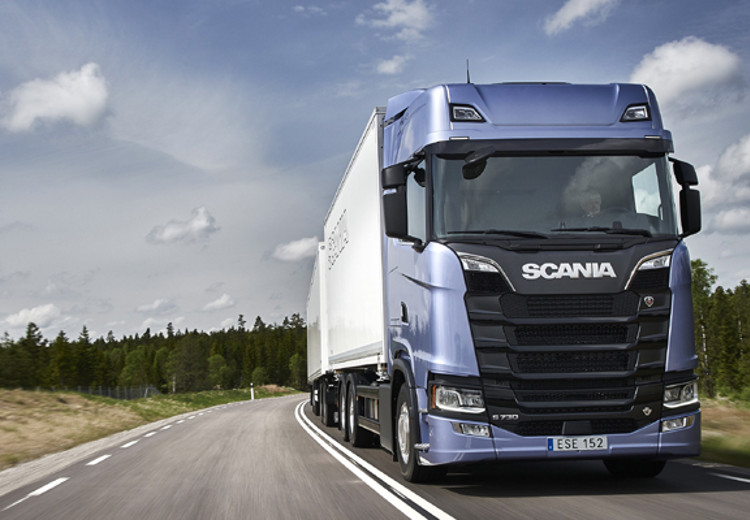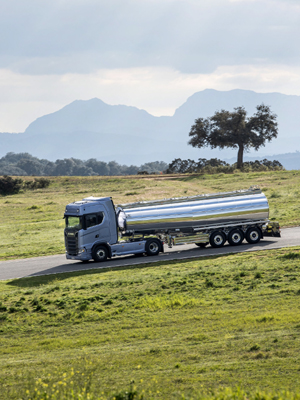Commercial vehicles
ACEA HD Sequences released
22 January 2025
13 December 2017
Latest performance requirements demand new and differentiated lubricants

As global heavy commercial vehicle sales continue on an upward trajectory, truck manufacturers are working hard to deliver the performance, reliability and value customers demand. Mattias Berger, Senior Technical Manager at Scania, talks to Insight about the changing requirements for lubricants.
Leading heavy commercial vehicle (HCV) and bus manufacturer Scania, operates in 100 countries and last year delivered more than 81,000 vehicles across the globe. With its ‘customer first’ mentality Scania tailors its vehicles to specific transport needs, giving customers better overall operating economy. As far as lubricants are concerned, Mattias says that Scania aims to deliver performance enhancements and advanced protection and is looking for new and differentiated products that meet strict performance requirements.
The ACEA 2016 heavy-duty engine oil (HDEO) sequences, published on December 1 2016, are designed to ensure that vehicles are operated with a minimum oil quality. But, as Mattias explains, with the needs of its users in mind, Scania has recently launched the Scania LDF-4 lubricant specification.
Mattias Berger, Scania Infineum International Limited
Scania LDF-4 was developed with the end user in mind. We wanted to offer our customers the longest possible oil drain intervals but at the same time improve fuel economy as well as reduce the impact of oil on after-treatment systems. Scania LDF-4 gives a Scania customer the lowest possible total operational cost, with the best possible engine wear protection.
Mattias continues by outlining the specific lubricant performance attributes Scania values. “We have three key requirements for our vehicles. These are engine durability, driveline efficiency (both engine and aftertreatment) and lower end user costs – by which I mean as long an oil drain and diesel particulate filter service interval as possible. However, they must come with a reasonable oil price tag.”
One of the key changes in the new Scania LDF-4 specification is the move from the ACEA E9 chemical box to ACEA E6, which has more stringent sulphur and phosphorus limits while keeping the S-ash content at 1% maximum.
Mattias Berger, Scania Infineum International Limited
The reason for sharpening our sulphur and phosphorous requirements was to further limit the impact of the lubricant on our aftertreatment systems. We are likely to see a continuous demand for the ash limit to be lowered. We expect that our need for long service intervals on aftertreatment systems will increase further in the future. For this reason oils with a low impact on aftertreatment as well as minimized oil consumption are an important part of our strategy for the future.
Currently, there is a high level of complexity in HDEO specifications, with different requirements in North America and Europe and from individual OEMs. Insight was keen to hear Mattias’s views on the possibility for harmonisation.
Mattias Berger, Scania Infineum International Limited
I believe that as the demands on engines increase it will become more and more difficult to see lubricants as a general commodity. Instead, lubricants need to be seen as a critical component of the engine in the same way as we for example that we see the pistons, liners, turbo, bearings and valves. For this reason, it will become increasingly important to develop high-end lubricants for each particular engine design to offer the best performance for the end user. For this reason, harmonising OEM specs is difficult.
With some of the next generation diesel engines being developed in joint projects between Scania and MAN, Mattias does foresee similarities in the requirements of future lubricant specifications across the group. However, in terms of industry specifications, he has a different viewpoint. “There will always be a need for a backward compatible engine lubricant suitable for many markets and many engine types. As more OEMs operate globally with their engine platforms, harmonising the general North American and European oil specifications would be beneficial.”
The world over, emissions regulations are one of the key drivers for change in the HCV market. In Europe, the Euro VI vehicle emissions standard introduced large reductions in the permissible levels of unburned hydrocarbons, oxides of nitrogen (NOx) and particulate matter (PM) along with a new requirement to limit particulate number (PN).
Such large changes mean special engine designs and aftertreatment systems are required. Since lubricants can impact their performance, Insight wanted to find out what Mattias expects from future engine oils.
Mattias Berger, Scania Infineum International Limited
Most likely we will look in more detail at effects of oils on after-treatment systems. Today we have a sulphated ash limitation, but we know that different detergent types seem to generate different ash characteristics. This may drive a need for certain ash differentiation in future specs.
Although Euro VI does not include any CO2 restrictions, the need to reduce end users’ operating costs puts fuel efficiency high on the OEM’s agenda. Low viscosity lubricants are key enablers for fuel economy – but Mattias does not see a need to develop HCV fuel economy engine tests. “The fuel efficiency performance of the lubricant is very tightly coupled to the unique hardware of a specific engine. For this reason, I believe that the more generic requirements of viscosity, HTHS viscosity and viscosity retention will be the focus for future lubricant specifications.”
Lower HTHS viscosity has already appeared in API specifications, and Berger expects this trend to be followed in future ACEA and Scania specifications.
Mattias Berger, Scania Infineum International Limited
Scania already allows the use of SAE 20 oils in certain haulage applications with our Scania LDF-3 FS specification. The SAE 20 viscosity grade as well as low HTHS SAE 30 oils will be more and more important in European applications of Scania engines.
With governments around the globe working to meet their environmental obligations, OEMs are looking for every opportunity to meet the tighter CO2 emissions limits being introduced. Mattias does anticipate electrification to influence, but not transform, the HCV-business in the near (to mid term) future. Increased global demand for heavy freight will depend on highly efficient heavy internal combustion engines in combination with different levels of electrification.
Mattias Berger, Scania Infineum International Limited
Our current understanding is that trucks will need diesel engines for many decades. Hybridisation, will result in more frequent engine stops and starts, which will definitely put more demand on wear protection.
 Mattias Berger believes future fuel types will be very diverse
Mattias Berger believes future fuel types will be very diverseHowever, electrification is not the only pathway to lower CO2, alternative fuels, such as liquid natural gas (LNG) and renewable/bio based fuels, look set to increase. Mattias believes future fuel types will be very diverse. “Local variations will arise as result of the need to provide the best possible solution for that particular market and customer. With so many different fuel options, and as volumes of alternatives increase, it will be unreasonable for a workshop to handle separate lubricants for all of the different fuels used by their customers. For this reason I think it is very important that lubricants developed for diesel engines can also operate with a variety of alternative fuels like CNG, LNG, FAME and different alcohols.”
The introduction of new aftertreatment systems and new fuel types, combined with the need to reduce end users’ operational costs, mean lubricants must act as a critical component of the engine. “I think it is increasingly important for lubricant formulators and OEMs to work closely together to co-engineer lubricant and hardware solutions so that we have a perfect match between our aftertreatment systems, oil formulations and engine performance. I’m sure this will create new ideas on how to formulate oils as well as on the regeneration of aftertreatment systems in the future.”
Sign up to receive monthly updates via email